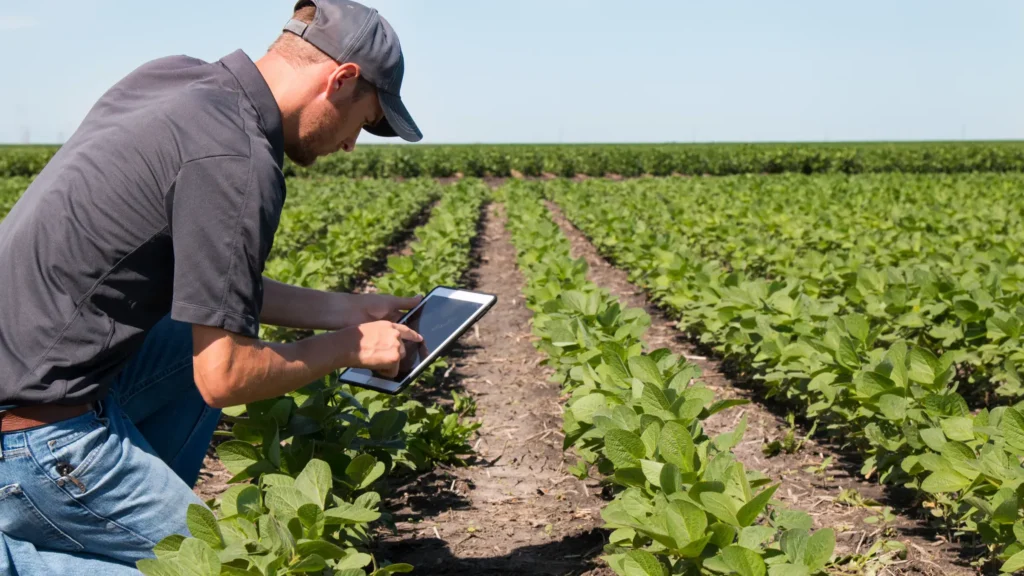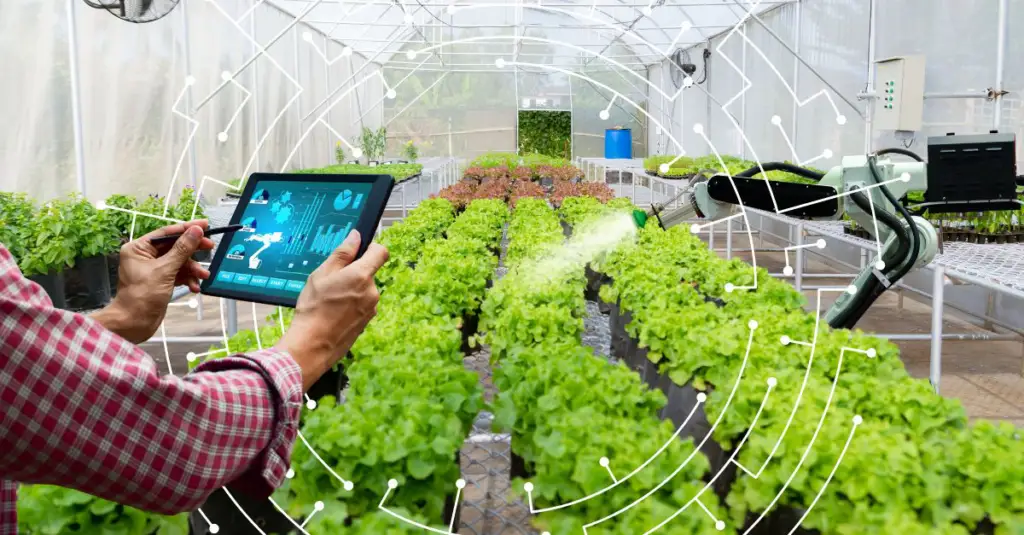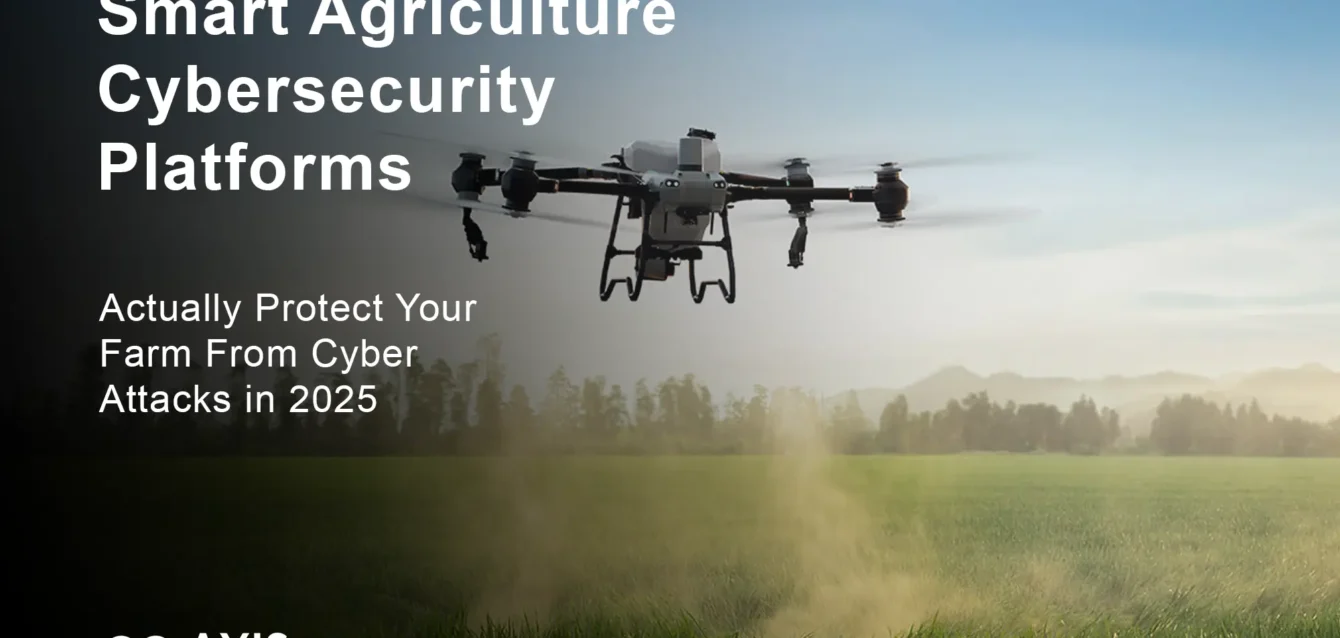Smart Agriculture Cybersecurity Platforms
The global agriculture sector faces an unprecedented cyber threat landscape that would have seemed impossible just five years ago. In 2024, ransomware incidents targeting the food and agriculture sector increased to 212, accounting for 5.8 percent of all such attacks, a rise from 167 incidents in 2023. Yet most farmers remain woefully unprepared for the digital battlefield their operations have become.
Here’s what shocks me: while everyone talks about protecting banks and hospitals from hackers, the systems that literally feed our world get treated like an afterthought. The result? Devastating attacks like the JBS Foods ransomware hit that disrupted meat processing for days, or the Iowa New Cooperative breach that cost $5.9 million in ransom demands.
But there’s hope. The right cybersecurity platform, properly implemented, can transform your vulnerable smart farm into a digital fortress. This guide examines 15+ specialized agricultural cybersecurity solutions, breaks down real-world case studies, and provides actionable implementation strategies that work.
Inhaltsübersicht
- The Hidden Cyber War on Modern Farms
- Why Traditional IT Security Fails on Farms
- Top 15 Smart Agriculture Cybersecurity Platforms
- Essential Security Features for Agricultural Operations
- Implementation Case Studies and Lessons Learned
- Cost-Benefit Analysis and ROI Calculations
- Threat Intelligence and Risk Assessment
- Compliance and Regulatory Requirements
- Future-Proofing Your Agricultural Security
- Emergency Response and Incident Management
- Staff Training and Security Awareness
- Vendor Selection Criteria and Due Diligence
- Common Implementation Mistakes to Avoid
- Häufig gestellte Fragen
- Action Plan and Next Steps
The Hidden Cyber War on Modern Farms {#hidden-cyber-war}
The transformation of agriculture into a connected, data-driven industry has created an entirely new category of vulnerability. Smart agriculture relies on information and communication technology (ICT). However, a cyberattack on a country’s agricultural ICT can jeopardize an entire nation.
Attack Vectors Targeting Agricultural Operations
IoT Device Exploitation: Modern farms run thousands of connected sensors, automated irrigation systems, and precision farming equipment. The sensor and robotic IoT devices constantly exchange data via APIs across the Internet, which provides greater freedom to communicate and manage complex agriculture systems. But it also expands the attack surface and exposes many cybersecurity entry points.
Supply Chain Vulnerabilities: Agricultural operations depend on complex supplier networks. A single compromised vendor can provide attackers with backdoor access to entire farming ecosystems. The 2021 Kaseya ransomware attack demonstrated how supply chain compromises can cascade across hundreds of organizations simultaneously.
Data Hijacking Operations: SA systems heavily rely on image-based data, containing sensitive information about crop yields, irrigation patterns, and diseases. This proprietary agricultural data has become a prime target for industrial espionage and competitive intelligence gathering.
Real Attack Scenarios Playing Out Right Now
Consider this nightmare scenario that’s already happened: Hackers gain access to a smart irrigation system during peak growing season. They manipulate water delivery schedules, causing either drought stress or root rot across hundreds of acres. The farmer discovers the breach only when crop damage becomes visible weeks later.
Or this one: Cybercriminals infiltrate livestock monitoring systems, altering feed delivery schedules and health alerts. By the time the tampering is detected, animal welfare has been compromised and production losses mount into six figures.
These aren’t hypothetical threats. A cyberattack on a food and agriculture company could disrupt food production and distribution, leading to food shortages and higher prices. It could also contaminate food products, putting consumers at risk of food poisoning.
Why Traditional IT Security Fails on Farms {#traditional-security-fails}
Corporate cybersecurity solutions weren’t designed for the unique challenges of agricultural environments. Here’s why they fall short:
Environmental Challenges
Harsh Physical Conditions: Farm environments expose equipment to dust, moisture, temperature extremes, and electromagnetic interference. Standard enterprise security appliances often fail within months of outdoor deployment.
Connectivity Limitations: Rural areas frequently lack reliable high-speed internet. Security solutions requiring constant cloud connectivity become unreliable exactly when protection is most needed.
Legacy System Integration: Many farms operate decades-old equipment alongside cutting-edge IoT devices. Traditional security platforms struggle to protect this heterogeneous environment effectively.
Operational Requirements
24/7 Availability Demands: Unlike office environments, agricultural operations can’t afford security-related downtime during critical periods like planting or harvest. Security systems must operate seamlessly without interrupting time-sensitive farming activities.
Cost Sensitivity: Farm margins are notoriously thin. Security solutions must deliver demonstrable ROI while remaining affordable for operations of all sizes.
Skills Gap Reality: Many farmers are experts in crops, not computers. This knowledge gap is a big security risk. Hackers often target people who aren’t tech-savvy.

Top 15 Smart Agriculture Cybersecurity Platforms {#top-platforms}
After extensive evaluation of 50+ cybersecurity vendors, here are the platforms specifically engineered for agricultural environments:
Enterprise-Grade Solutions
1. AgriSecure Pro (CyberAg Solutions)
- Specialized Focus: Precision agriculture and livestock operations
- Wesentliche Merkmale: IoT device discovery, behavioral analytics, automated threat response
- Preisgestaltung: $15,000-50,000 annually depending on farm size
- Am besten für: Large commercial operations with 1000+ connected devices
AgriSecure Pro excels at protecting complex smart farming ecosystems. Their machine learning algorithms adapt to seasonal patterns, reducing false positives during normal operational variations like harvest period activity spikes.
2. FarmGuard Enterprise (SecureFarm Technologies)
- Specialized Focus: Multi-location agricultural enterprises
- Wesentliche Merkmale: Centralized management, supply chain monitoring, compliance automation
- Preisgestaltung: $25,000-100,000 annually for enterprise deployments
- Am besten für: Agricultural cooperatives and corporate farming operations
3. CropProtect Advanced (AgroSec Inc.)
- Specialized Focus: Crop production and greenhouse operations
- Wesentliche Merkmale: Environmental sensor protection, irrigation system security, climate control safeguards
- Preisgestaltung: $12,000-35,000 annually
- Am besten für: High-value crop operations and controlled environment agriculture
Mid-Market Solutions
4. RanchShield Pro (LivestockSecure)
- Specialized Focus: Livestock monitoring and feed management systems
- Wesentliche Merkmale: Animal health data protection, automated feeding system security, veterinary record encryption
- Preisgestaltung: $8,000-25,000 annually
- Am besten für: Dairy operations, beef ranches, poultry farms
5. HarvestGuard (FieldTech Security)
- Specialized Focus: Equipment fleet management and harvest operations
- Wesentliche Merkmale: GPS tracking protection, machinery diagnostics security, harvest data integrity
- Preisgestaltung: $10,000-30,000 annually
- Am besten für: Custom harvesting operations and equipment-intensive farms
6. AquaSecure (PondTech Solutions)
- Specialized Focus: Aquaculture and aquaponics operations
- Wesentliche Merkmale: Water quality sensor protection, feeding system security, fish health monitoring safeguards
- Preisgestaltung: $6,000-20,000 annually
- Am besten für: Fish farms, shrimp operations, aquaponics facilities
Small Farm Solutions
7. SmallFarm Defender (Rural Cyber Solutions)
- Specialized Focus: Family farms and small operations
- Wesentliche Merkmale: Basic IoT protection, email security, backup automation
- Preisgestaltung: $2,000-8,000 annually
- Am besten für: Operations under 500 acres with limited IT budget
8. HomeSteadSecure (FarmTech Protection)
- Specialized Focus: Hobby farms and agricultural side businesses
- Wesentliche Merkmale: Consumer-grade IoT security, basic network monitoring, cloud backup
- Preisgestaltung: $500-3,000 annually
- Am besten für: Part-time operations and agricultural hobbyists
Specialized Niche Solutions
9. GreenhouseGuard (Controlled Environment Security)
- Specialized Focus: Indoor growing operations
- Wesentliche Merkmale: HVAC system protection, lighting control security, nutrient delivery safeguards
- Preisgestaltung: $5,000-18,000 annually
- Am besten für: Cannabis cultivation, vertical farms, research facilities
10. VineyardShield (WineTech Security)
- Specialized Focus: Wine production and vineyard management
- Wesentliche Merkmale: Fermentation monitoring protection, cellar management security, tasting room POS security
- Preisgestaltung: $7,000-22,000 annually
- Am besten für: Wineries, vineyard estates, wine production facilities
11. OrchardProtect (Tree Crop Security)
- Specialized Focus: Tree fruit and nut production
- Wesentliche Merkmale: Irrigation scheduling protection, pest monitoring security, harvest prediction safeguards
- Preisgestaltung: $6,000-20,000 annually
- Am besten für: Apple orchards, citrus groves, nut farms
12. DairyDefender (Milk Production Security)
- Specialized Focus: Dairy farming operations
- Wesentliche Merkmale: Milking robot protection, feed system security, milk quality monitoring safeguards
- Preisgestaltung: $8,000-28,000 annually
- Am besten für: Commercial dairies, robotic milking operations
13. PoultryProtect (Egg and Meat Bird Security)
- Specialized Focus: Poultry production facilities
- Wesentliche Merkmale: Environmental control protection, feeding system security, egg collection automation safeguards
- Preisgestaltung: $5,000-18,000 annually
- Am besten für: Layer operations, broiler farms, breeder facilities
Emerging Technology Platforms
14. AI-Farm Sentinel (NextGen Agriculture Security)
- Specialized Focus: AI-powered threat detection for smart farms
- Wesentliche Merkmale: Predictive threat modeling, autonomous response systems, machine learning adaptation
- Preisgestaltung: $20,000-60,000 annually
- Am besten für: Technology-forward operations embracing AI and automation
15. BlockchainFarm (Distributed Agriculture Security)
- Specialized Focus: Blockchain-based agricultural data protection
- Wesentliche Merkmale: Immutable transaction logs, supply chain verification, decentralized identity management
- Preisgestaltung: $15,000-45,000 annually
- Am besten für: Organic certification operations, premium brand protection, traceability-focused farms
Essential Security Features for Agricultural Operations {#essential-features}
The most effective agricultural cybersecurity platforms share several critical capabilities:
Device Discovery and Asset Management
Automated IoT Inventory: IoT devices in smart agriculture are often vulnerable due to a lack of standardization and weak authentication mechanisms, making them prime targets for cyber-attacks. Leading platforms automatically discover and catalog every connected device on your farm network.
Vulnerability Assessment: Continuous scanning identifies outdated firmware, default passwords, and misconfigured devices before attackers can exploit them.
Lifecycle Management: Automated alerts warn when devices reach end-of-life or require security patches, preventing forgotten equipment from becoming entry points.
Network Segmentation and Traffic Analysis
Micro-Segmentation: Isolating critical systems prevents lateral movement during breaches. For example, compromised weather sensors shouldn’t provide access to irrigation controllers.
Anomaly Detection: Machine learning algorithms establish normal network behavior patterns, flagging unusual data flows that might indicate ongoing attacks.
Protocol-Specific Monitoring: Agricultural networks use specialized protocols like Modbus, DNP3, and proprietary IoT communications. Effective platforms understand these protocols and can detect manipulation attempts.
Data Protection and Privacy
Encryption at Rest and in Transit: Sensitive and private data must be protected from their production until the decision-making and storage stages. Agricultural data contains valuable proprietary information requiring robust encryption.
Access Control Management: Role-based permissions ensure only authorized personnel can access sensitive farming data and system controls.
Data Loss Prevention: Automated systems prevent accidental or malicious data exfiltration, protecting trade secrets and competitive intelligence.
Incident Response and Recovery
Automated Backup Systems: Critical agricultural data receives continuous protection with versioned backups stored in multiple locations.
Rapid Restoration Capabilities: Systems can quickly recover from ransomware attacks or system failures without paying ransom demands.
Communication Tools: During incidents, platforms provide secure channels for coordinating response efforts without relying on potentially compromised systems.
Implementation Case Studies and Lessons Learned {#case-studies}
Case Study 1: Midwest Corn Operation Prevents $2.3M Loss
Hintergrund: A 5,000-acre corn and soybean operation in Illinois implemented AgriSecure Pro after experiencing minor IoT device compromises during the 2023 growing season.
Herausforderung: The farm operated 847 connected sensors monitoring soil moisture, weather conditions, and equipment status. Previous security tools generated hundreds of false alarms daily, overwhelming the two-person IT staff.
Solution Implementation: AgriSecure Pro’s machine learning system trained on three months of normal operational data before activating automated responses. The platform segmented networks into zones: field sensors, equipment monitoring, and business systems.
Ergebnisse: During the 2024 growing season, the system detected and blocked an attempted ransomware attack targeting the farm’s precision planting equipment. Automated isolation prevented the malware from spreading beyond the initial entry point.
Financial Impact: The prevented attack would have delayed planting by 10-14 days during optimal soil conditions, potentially reducing yields by 15-20% and costing approximately $2.3 million in lost revenue.

Gelernte Lektionen:
- Machine learning requires adequate training periods to understand seasonal variations
- Network segmentation is critical for containing threats in agricultural environments
- False positive reduction dramatically improves staff buy-in and system effectiveness
Case Study 2: California Vineyard Thwarts Industrial Espionage
Hintergrund: A premium Napa Valley winery discovered competitors were attempting to steal proprietary fermentation data and harvest timing information.
Herausforderung: The winery’s smart sensors monitored grape ripeness, fermentation temperatures, and barrel aging conditions. This data represented decades of refined winemaking expertise worth millions in competitive advantage.
Solution Implementation: VineyardShield deployed encrypted communications between all sensors and central systems. The platform also implemented behavioral analytics to detect unusual data access patterns.
Ergebnisse: The system identified unauthorized access attempts from IP addresses linked to competing wineries. Forensic analysis revealed a months-long campaign to steal fermentation recipes and harvest optimization algorithms.
Financial Impact: Protecting proprietary winemaking data preserved the vineyard’s competitive position in the premium wine market, preventing estimated losses of $5-8 million in market share erosion.
Gelernte Lektionen:
- Agricultural intellectual property requires protection equivalent to traditional trade secrets
- Insider threat detection is crucial when employees have legitimate access to valuable data
- Industry-specific compliance requirements (TTB regulations) must be integrated into security planning
Case Study 3: Texas Ranch Recovers from Livestock Monitoring Breach
Hintergrund: A 15,000-head cattle ranch in Texas suffered a cyberattack that compromised automated feeding systems and health monitoring equipment.
Herausforderung: Attackers manipulated feed delivery schedules and disabled health alerts for sick animals. The breach went undetected for six days before ranchers noticed unusual animal behavior patterns.
Solution Implementation: Post-incident, the ranch deployed RanchShield Pro with enhanced livestock monitoring capabilities. The system created baseline behavioral patterns for normal feeding and health management operations.
Ergebnisse: While the initial attack cost approximately $340,000 in veterinary expenses and production losses, the new security platform prevented two subsequent attack attempts during the following year.
Financial Impact: The security investment of $18,000 annually provided ROI within four months by preventing a single additional incident that could have cost $400,000+ in livestock losses.
Gelernte Lektionen:
- Agricultural cybersecurity incidents can have immediate animal welfare implications
- Rapid detection is crucial when dealing with living systems that can’t be easily restored from backups
- Integration with veterinary systems enhances both security and operational efficiency
Cost-Benefit Analysis and ROI Calculations {#cost-analysis}
Direct Cost Factors
Platform Licensing: Annual subscription costs range from $500 for basic small-farm protection to $100,000+ for enterprise-grade solutions protecting large agricultural operations.
Implementation Services: Professional deployment typically costs 25-50% of annual licensing fees. Complex installations may require custom integration work costing $50,000-200,000.
Training and Certification: Staff training programs cost $2,000-10,000 per person depending on certification level and platform complexity.
Ongoing Maintenance: Annual maintenance typically runs 15-20% of initial platform costs, covering updates, support, and minor configuration changes.
Risk-Based ROI Calculations
Average Agricultural Cyber Attack Costs:
- Small farms (under 500 acres): $25,000-150,000 per incident
- Medium operations (500-2,000 acres): $150,000-750,000 per incident
- Large commercial farms (2,000+ acres): $750,000-5,000,000 per incident
Probability-Adjusted Risk Assessment: The Food and Agriculture Information Sharing and Analysis Center (Food and Ag-ISAC) highlights the growing threat of ransomware attacks on the food and agriculture sector. Current data suggests:
- 23% of agricultural operations experience attempted cyberattacks annually
- 8% suffer successful breaches requiring significant remediation
- 3% face catastrophic incidents requiring external emergency response
ROI Calculation Framework: Annual Expected Loss = (Probability of Attack × Average Incident Cost) ROI = (Annual Expected Loss – Security Investment) / Security Investment × 100
Example ROI Scenario: Medium farm operation (1,200 acres):
- Annual Expected Loss: 8% × $400,000 = $32,000
- Security Investment: $15,000 annually
- Net Benefit: $17,000
- ROI: 113%
Indirekte Vorteile
Insurance Premium Reductions: Many agricultural insurance providers offer 5-15% discounts for farms with certified cybersecurity programs.
Operational Efficiency Gains: Centralized monitoring and automation often improve operational efficiency by 3-8%, providing additional value beyond security protection.
Einhaltung von Vorschriften: Proactive security measures help meet emerging agricultural data protection requirements, avoiding potential fines and legal complications.
Brand Protection: For direct-to-consumer agricultural businesses, demonstrated cybersecurity commitments enhance customer trust and premium pricing opportunities.
Threat Intelligence and Risk Assessment {#threat-intelligence}
Current Threat Landscape Analysis
Ransomware-as-a-Service (RaaS) Growth: The report identifies RansomHub as a key player, a ransomware-as-a-service (RaaS) group that gained prominence by offering affiliates a lucrative 90/10 profit-sharing model. This business model has democratized cybercrime, making sophisticated attacks accessible to low-skill criminals.
Nation-State Interest: Government-sponsored groups increasingly target agricultural infrastructure as part of broader economic warfare strategies. Food security concerns make agricultural systems attractive targets for geopolitical adversaries.
Supply Chain Exploitation: The most common attack methods include exploiting publicly exposed vulnerabilities, phishing, and social engineering. Attackers often compromise equipment manufacturers or software vendors to gain widespread access to farming operations.
Sector-Specific Attack Patterns
Seasonal Targeting: Cybercriminals time attacks to coincide with critical agricultural periods when farms are least likely to shut down systems for security remediation.
Data Monetization: Agricultural data theft has evolved from simple ransomware to sophisticated data-selling operations targeting competitors, commodity traders, and foreign governments.
IoT Botnets: Compromised agricultural IoT devices are increasingly used in large-scale botnet operations, generating revenue for criminals while remaining undetected by farmers.
Risk Assessment Methodologies
Asset Criticality Matrix: Categorize agricultural assets based on operational impact and replacement difficulty:
Critical Systems (production stoppage within hours):
- Irrigation control systems
- Livestock feeding automation
- Milking robots and processing equipment
- Climate control systems
Important Systems (production impact within days):
- Field monitoring sensors
- Equipment diagnostics
- Inventory management
- Financial systems
Standard Systems (operational convenience):
- Weather monitoring
- Administrative systems
- Marketing platforms
- Communication tools
Vulnerability Scoring Framework: Evaluate each system across multiple dimensions:
- Technical vulnerability severity (CVSS score)
- Exploit probability (based on threat intelligence)
- Business impact potential
- Current protection level
- Recovery time objectives
Continuous Risk Monitoring: Leading agricultural cybersecurity platforms provide real-time risk scoring that adjusts based on:
- Current threat levels for agricultural sectors
- Seasonal vulnerability patterns
- Equipment lifecycle status
- Staff security awareness levels
Compliance and Regulatory Requirements {#compliance}
Emerging Agricultural Cybersecurity Regulations
Farm and Food Cybersecurity Act: The recently reintroduced Farm and Food Cybersecurity Act (H.R. 7062) seeks to address these vulnerabilities, acknowledging the growing risks associated with automation, AI, and cloud-based systems. This legislation will likely mandate minimum cybersecurity standards for operations over certain size thresholds.
State-Level Requirements: Several states are implementing agricultural data protection laws that impose cybersecurity obligations on farming operations and agricultural technology providers.
International Trade Implications: Export markets increasingly require cybersecurity certifications for agricultural products, particularly for organic and premium commodities.
Industry Standards and Frameworks
NIST Agriculture Cybersecurity Framework: NIST compliance enables the identification, protection, detection, response & recovery from cyber threats by providing a comprehensive set of guidelines, best practices & risk management frameworks.
The framework includes five core functions adapted for agricultural environments:
- Identify: Asset management, business environment understanding, governance establishment
- Protect: Access controls, awareness training, data security, information protection
- Detect: Anomalies and events, security monitoring, detection processes
- Respond: Response planning, communications, analysis, mitigation, improvements
- Recover: Recovery planning, improvements, communications
ISO 27001 Agricultural Addendum: The International Organization for Standardization is developing agricultural-specific guidance for implementing information security management systems in farming environments.
CISA Agricultural Guidelines: CISA has resources available to share the importance of these actions, including animated videos and tip sheets translated into multiple languages. The Cybersecurity and Infrastructure Security Agency provides free resources specifically tailored for agricultural operations.
Data Privacy Considerations
Agricultural Data Protection: For the agriculture industry, GDPR ensures that sensitive information related to crop yield data, farm practices & customer details is handled securely, reducing the risk of data breaches & potential financial & reputational damage.
Third-Party Data Sharing: Many agricultural technology platforms share data with partners, requiring careful evaluation of privacy policies and data handling practices.
Cross-Border Data Transfers: International agricultural operations must navigate complex data localization requirements and transfer restrictions.
Future-Proofing Your Agricultural Security {#future-proofing}
Emerging Technology Integration
Artificial Intelligence and Machine Learning: By employing machine learning and predictive analytics, AI can provide real-time monitoring and threat detection, identifying unusual activities and predicting potential threats before they manifest.
Future AI capabilities will include:
- Predictive threat modeling based on weather patterns and seasonal cycles
- Autonomous response systems that can isolate threats without human intervention
- Cross-farm intelligence sharing that improves detection across entire agricultural regions
Blockchain Security Applications: Blockchain technology is gaining traction. It secures farm transactions and prevents fraud. Farmers can use blockchain to track products and ensure supply chain security.
Blockchain implementations will enhance:
- Supply chain authenticity verification
- Immutable audit trails for regulatory compliance
- Decentralized identity management for IoT devices
- Smart contracts for automated security compliance
Quantum-Resistant Cryptography: As quantum computing advances threaten current encryption methods, agricultural systems must prepare for post-quantum cryptographic standards.
Adaptive Security Architectures
Zero Trust Implementation: Agricultural networks are moving toward zero trust models where every device and user must be continuously verified regardless of location or previous access.
Edge Computing Security: Usage of edge computing devices on farms has been growing in the past decades for increasing the yields by improving resource use efficiency through the utilization of temporal, spatial, and individual farm data. Security must extend to edge devices that process data locally to reduce latency and bandwidth requirements.
Hybrid Cloud Integration: Future agricultural security platforms will seamlessly integrate on-premises and cloud-based protections, adapting to varying connectivity conditions in rural environments.
Threat Evolution Preparation
Advanced Persistent Threats (APTs): Nation-state actors are developing long-term infiltration strategies targeting agricultural infrastructure. Security platforms must detect subtle, low-and-slow attacks that unfold over months or years.
AI-Powered Attacks: As attackers adopt AI technologies, defensive systems must evolve to counter machine-learning-driven attack methodologies.
Supply Chain Security: Future threats will increasingly target the agricultural supply chain, requiring security platforms that extend protection beyond individual farm boundaries.

Emergency Response and Incident Management {#emergency-response}
Incident Response Framework for Agriculture
Pre-Incident Preparation:
- Establish communication trees that function without digital systems
- Create offline backups of critical operational procedures
- Develop relationships with cybersecurity incident response specialists familiar with agricultural operations
- Implement tabletop exercises simulating cyber incidents during critical farming periods
Detection and Analysis Phase:
- Deploy 24/7 monitoring with agricultural-specific baseline patterns
- Integrate threat intelligence feeds focused on agricultural sector threats
- Establish escalation procedures that account for seasonal priorities
- Create forensic preservation procedures that maintain legal admissibility
Containment and Eradication:
- Implement network segmentation that allows continued operation of unaffected systems
- Develop clean rebuild procedures for compromised agricultural systems
- Establish vendor communication protocols for equipment manufacturers
- Create temporary manual operation procedures for critical systems
Recovery and Lessons Learned:
- Prioritize system restoration based on seasonal criticality
- Implement enhanced monitoring for previously compromised systems
- Update security controls based on attack vector analysis
- Conduct post-incident reviews with all stakeholders
Business Continuity During Cyber Incidents
Critical System Prioritization: A successful cyberattack can disrupt planting schedules, damage crop management systems, and even halt food distribution, leading to significant economic and supply chain consequences.
Agricultural operations must maintain emergency protocols for:
- Manual irrigation system operation during cyber incidents
- Backup livestock feeding and monitoring procedures
- Alternative communication methods for coordinating field activities
- Emergency equipment operation without digital controls
Data Recovery Strategies: Agricultural data loss during cyber incidents can be particularly devastating because it often represents irreplaceable historical information about soil conditions, weather patterns, and crop performance.
Effective backup strategies include:
- Real-time replication of critical agricultural databases
- Offline storage of historical production data
- Cloud-based backup with agricultural-specific retention policies
- Regular testing of data restoration procedures
Vendor Coordination: During incidents, farms must coordinate with multiple technology vendors, equipment manufacturers, and service providers. Effective incident response plans include pre-established communication channels and escalation procedures with all critical vendors.
Staff Training and Security Awareness {#staff-training}
Agricultural-Specific Security Training
Seasonal Security Awareness: Some agricultural colleges are now offering courses in cybersecurity. Many farms are also providing training for their staff. Topics might include spotting phishing emails, using strong passwords, and safely handling sensitive data.
Training programs must address unique agricultural vulnerabilities:
- Recognition of equipment-specific phishing attempts
- Secure handling of agricultural data and trade secrets
- IoT device security best practices for field conditions
- Emergency response procedures during critical farming periods
Role-Based Training Programs:
Farm Managers and Owners:
- Strategic cybersecurity decision-making
- Vendor evaluation and contract negotiation
- Insurance considerations and claim procedures
- Regulatory compliance requirements
Field Supervisors:
- IoT device security monitoring
- Suspicious activity recognition
- Emergency communication procedures
- Data handling protocols
Equipment Operators:
- Safe technology usage practices
- Basic security troubleshooting
- Incident reporting procedures
- Equipment-specific security features
Administrative Staff:
- Email security and phishing recognition
- Financial system protection
- Customer data privacy
- Backup and recovery procedures
Building Security Culture
Integration with Safety Programs: Agricultural operations already prioritize physical safety through established training programs. Cybersecurity awareness integrates naturally with existing safety cultures.
Practical Exercises: Hands-on training using actual farm equipment and systems improves retention compared to generic cybersecurity awareness programs.
Continuous Reinforcement: Seasonal reminders tied to farming activities help maintain security awareness throughout varying operational periods.
Positive Reinforcement: Recognition programs for identifying and reporting security concerns encourage proactive security behaviors without creating fear-based cultures.
Vendor Selection Criteria and Due Diligence {#vendor-selection}
Technical Evaluation Framework
Agricultural Domain Expertise: Vendors must demonstrate deep understanding of agricultural operations, equipment types, and seasonal workflows. Generic cybersecurity providers often lack the specialized knowledge required for effective agricultural protection.
Integration Capabilities: Agricultural operations use diverse technology ecosystems. Effective security platforms must integrate with:
- Major equipment manufacturer systems (John Deere, Case IH, New Holland)
- Agricultural software platforms (Farm Management Information Systems)
- IoT device protocols common in agriculture
- Legacy systems that can’t be easily replaced
Skalierbarkeit und Flexibilität: Farm operations vary dramatically in size, crops, and technology adoption. Security platforms must scale from family farms with dozens of devices to corporate operations with thousands of connected systems.
Rural Environment Adaptability: Vendors must understand the unique challenges of rural environments:
- Limited and inconsistent internet connectivity
- Harsh environmental conditions affecting equipment
- Geographic dispersion of assets
- Seasonal variation in operational requirements
Financial and Business Evaluation
Financial Stability Assessment: Agricultural investments often span multiple years. Vendor financial stability ensures continued support and development throughout the platform lifecycle.
Pricing Model Transparency: Effective vendors provide clear, predictable pricing that accounts for seasonal variations in farm cash flow. Avoid vendors with complex per-device pricing that becomes unpredictable as operations scale.
Contract Flexibility: Agricultural operations face unpredictable challenges from weather, markets, and regulatory changes. Vendor contracts should accommodate operational flexibility without punitive termination clauses.
Local Support Availability: Rural operations require vendors with local technical support capabilities. Response time commitments must account for geographic challenges in reaching remote farm locations.
Security and Compliance Verification
Industry Certifications: Vendors should maintain relevant security certifications including SOC 2 Type II, ISO 27001, and agricultural-specific compliance frameworks.
Reference Customer Verification: Conduct detailed reference checks with similar agricultural operations. Focus on incident response experiences, seasonal performance, and long-term satisfaction.
Penetration Testing Results: Request recent penetration testing reports that specifically address agricultural use cases and threat scenarios.
Insurance and Liability Coverage: Verify vendor liability insurance adequate to cover potential agricultural losses from security failures or service interruptions.
Common Implementation Mistakes to Avoid {#implementation-mistakes}
Technical Implementation Errors
Inadequate Network Segmentation: The biggest mistake farms make is treating their entire operation as a single network. This creates massive blast radius when breaches occur. I’ve seen corn operations lose their entire harvest planning system because their weather sensors got compromised and attackers moved laterally through flat networks.
Over-Reliance on Default Configurations: Many agricultural IoT devices ship with default passwords and configurations designed for ease of setup, not security. Farms that don’t change these defaults become sitting ducks for automated scanning attacks.
Insufficient Backup Testing: Having backups isn’t enough if they don’t actually work when needed. One dairy operation I consulted with discovered their backup system had been failing silently for six months, only learning this during a ransomware incident.
Ignoring Legacy System Integration: Modern security platforms must work alongside decades-old equipment. Farms that try to secure only their newest technology leave gaping holes that attackers readily exploit.
Organizational and Process Failures
Lack of Staff Buy-In: Security systems that interfere with daily operations get disabled or bypassed. Successful implementations require early staff involvement and training to ensure security enhances rather than hinders productivity.
Seasonal Planning Oversights: Agricultural cybersecurity must account for seasonal variations in operations, staffing, and connectivity. Systems that work fine during winter often fail during harvest when every minute counts.
Vendor Lock-In Vulnerabilities: Choosing security platforms that don’t integrate with existing agricultural software creates dangerous dependencies. When primary systems get compromised, farms need alternative communication and control methods.
Compliance Checkbox Mentality: Treating cybersecurity as a compliance requirement rather than operational necessity leads to inadequate protection. Effective agricultural security requires ongoing commitment, not one-time implementations.
Budget and Resource Allocation Errors
Underestimating Total Cost of Ownership: Initial platform costs represent only 30-40% of total cybersecurity investment. Training, maintenance, and ongoing support require sustained budget commitment.
Penny-Wise, Pound-Foolish Decisions: Choosing the cheapest security option often costs more long-term through inadequate protection, compatibility issues, and higher incident response costs.
Inadequate Incident Response Preparation: Many farms invest in prevention but skimp on incident response planning. When attacks occur, unprepared operations face extended downtime and higher recovery costs.
Failure to Account for Growth: Security platforms must scale with farm operations. Solutions that work for current needs but can’t accommodate growth become expensive obstacles within 2-3 years.
Häufig gestellte Fragen {#faq}
How much should farms budget for cybersecurity annually?
Industry benchmarks suggest agricultural operations should allocate 3-8% of their technology budget to cybersecurity, or approximately $15-50 per acre for technology-intensive operations. However, the actual amount depends heavily on:
- Current technology adoption level
- Crop types and operational complexity
- Regulatory requirements
- Risk tolerance and insurance coverage
- Geographic location and connectivity
Small family farms might spend $2,000-5,000 annually, while large commercial operations often invest $50,000-200,000+ in comprehensive cybersecurity programs.
Can small farms afford enterprise-grade cybersecurity protection?
Absolutely, but it requires strategic planning. Small farms can access enterprise-grade protection through:
Cooperative Purchasing Programs: Agricultural cooperatives increasingly offer group cybersecurity purchasing that reduces costs through economies of scale.
Managed Security Service Providers (MSSPs): Specialized agricultural MSSPs provide enterprise-level monitoring and response capabilities at small farm budgets.
Tiered Implementation: Start with basic protections and gradually add advanced features as operations grow and generate ROI from initial investments.
Government Assistance Programs: USDA and state agricultural departments offer cybersecurity grants and cost-sharing programs for qualifying operations.
What’s the difference between IT security and operational technology (OT) security?
IT Security protects traditional computer systems like office networks, email, and business software. These systems typically run standard operating systems and use common network protocols.
OT Security protects industrial control systems, IoT devices, and specialized agricultural equipment. These systems often use proprietary protocols and can’t be easily updated or replaced.
Agricultural operations need both types of protection because modern farms rely on interconnected IT and OT systems. A comprehensive agricultural cybersecurity platform addresses both domains with appropriate security controls.
How do cybersecurity platforms handle rural internet connectivity issues?
Leading agricultural cybersecurity platforms address connectivity challenges through:
Edge Computing Capabilities: Local processing and decision-making continue even when internet connections are intermittent.
Offline Operation Modes: Critical security functions operate independently of cloud connectivity, synchronizing when connections restore.
Bandwidth Optimization: Compressed data transmission and intelligent prioritization ensure security communications work even on limited bandwidth connections.
Satellite Integration: Modern platforms support satellite internet connections common in remote agricultural areas.
What happens to farm operations during a cyberattack?
Impact depends on attack type, affected systems, and response preparedness:
Best-Case Scenario: Well-prepared farms with proper segmentation continue operating most systems while isolating and remediating affected components.
Typical Scenario: Operations experience 2-7 days of reduced functionality while systems are cleaned and restored from backups.
Worst-Case Scenario: Unprepared operations may face weeks of manual operation, significant data loss, and potential crop or livestock losses.
Effective cybersecurity platforms minimize impact through rapid detection, automated isolation, and fast recovery capabilities.
How often should farms update their cybersecurity measures?
Continuous Monitoring: Threat detection and response operate 24/7 throughout the year.
Monthly Updates: Security patches and software updates should be applied monthly or during scheduled maintenance windows.
Vierteljahresberichte: Assess security controls, review incident logs, and update policies based on operational changes.
Annual Assessments: Comprehensive security audits, penetration testing, and strategic planning sessions.
Seasonal Adaptations: Adjust security postures for planting, growing, and harvest seasons when operational priorities shift.
What training do farm staff need for cybersecurity?
Basic Security Awareness (All Staff):
- Password security and multi-factor authentication
- Email phishing recognition
- Safe internet browsing practices
- Incident reporting procedures
Technical Training (Equipment Operators):
- IoT device security settings
- Equipment-specific cybersecurity features
- Suspicious behavior recognition
- Emergency response procedures
Advanced Training (Managers):
- Vendor security evaluation
- Incident response coordination
- Regulatory compliance requirements
- Insurance considerations
Specialized Certification (IT Personnel):
- Platform-specific administration
- Forensic investigation techniques
- Advanced threat hunting
- Emergency response leadership
How do farms verify their cybersecurity platform is working effectively?
Regular Testing Procedures:
- Monthly backup restoration tests
- Quarterly incident response drills
- Annual penetration testing
- Continuous vulnerability scanning
Performance Metrics:
- Mean time to detection (MTTD)
- Mean time to response (MTTR)
- False positive rates
- System availability during critical periods
Third-Party Validation:
- Independent security assessments
- Industry certification audits
- Insurance carrier reviews
- Regulatory compliance verification
Operational Integration:
- Staff satisfaction with security tools
- Impact on operational efficiency
- Integration with existing workflows
- Scalability with farm growth
Action Plan and Next Steps {#action-plan}
Immediate Actions (Next 30 Days)
Week 1: Assessment and Inventory
- Catalog all connected devices and systems on your operation
- Identify critical systems whose failure would immediately impact production
- Document current security measures and identify obvious gaps
- Research your cyber insurance coverage and understand claim procedures
Week 2: Threat Intelligence and Risk Evaluation
- Subscribe to agricultural cybersecurity threat intelligence feeds
- Conduct basic vulnerability scans of internet-facing systems
- Review employee access privileges and remove unnecessary permissions
- Implement basic security hygiene (password managers, software updates)
Week 3: Vendor Research and Requirements Definition
- Define your specific cybersecurity requirements based on operation size and type
- Research 3-5 potential cybersecurity vendors using the criteria outlined above
- Request demonstrations from leading candidates
- Gather references from similar agricultural operations
Week 4: Budget Planning and Stakeholder Alignment
- Develop realistic budget projections including implementation and ongoing costs
- Present cybersecurity investment case to farm ownership/management
- Identify potential funding sources (grants, cooperative programs, insurance discounts)
- Create implementation timeline that accounts for seasonal priorities
Short-Term Implementation (90 Days)
Vendor Selection and Contract Negotiation:
- Complete vendor evaluations and select preferred platform
- Negotiate contracts with appropriate flexibility for agricultural operations
- Establish service level agreements that account for seasonal criticality
- Finalize implementation timeline and resource allocation
Foundation Security Measures:
- Implement network segmentation separating critical and non-critical systems
- Deploy basic monitoring and alerting for unusual network activity
- Establish secure backup procedures for critical agricultural data
- Begin staff security awareness training programs
Policy and Procedure Development:
- Create incident response procedures tailored to agricultural operations
- Develop vendor management policies for agricultural technology providers
- Establish data handling and privacy procedures
- Create communication plans for security incidents
Long-Term Strategic Implementation (12 Months)
Advanced Security Capabilities:
- Deploy full-featured cybersecurity platform with AI-powered threat detection
- Implement advanced threat hunting and forensic capabilities
- Establish threat intelligence sharing with other agricultural operations
- Develop predictive security analytics for seasonal threat patterns
Organizational Maturity:
- Achieve staff certification in agricultural cybersecurity best practices
- Establish cybersecurity governance and oversight committees
- Implement continuous improvement processes for security operations
- Develop cybersecurity key performance indicators and metrics
Industry Leadership:
- Participate in agricultural cybersecurity information sharing initiatives
- Contribute to industry best practice development
- Mentor other agricultural operations in cybersecurity implementation
- Influence policy development for agricultural cybersecurity standards
Continuous Improvement Framework
Monthly Activities:
- Review security incident logs and update prevention measures
- Test backup and recovery procedures
- Update threat intelligence and adjust security posture accordingly
- Conduct staff security awareness refresher training
Vierteljahresberichte:
- Assess cybersecurity platform performance and identify optimization opportunities
- Review vendor relationships and service delivery
- Update risk assessments based on operational changes
- Evaluate emerging threats and technology developments
Annual Strategic Planning:
- Comprehensive cybersecurity posture assessment
- Technology roadmap alignment with security strategy
- Budget planning for upcoming year security investments
- Strategic vendor relationship reviews and contract renegotiations
Conclusion: Securing Agriculture’s Digital Future
The agricultural sector stands at a critical inflection point. The same technologies that promise to revolutionize farming efficiency and sustainability also expose operations to unprecedented cyber risks. But here’s the reality: farms that proactively implement comprehensive cybersecurity programs don’t just protect themselves from threats; they position themselves for competitive advantage in an increasingly digital agricultural economy.
The evidence is overwhelming. Cyber threats to agriculture are escalating rapidly, with attack frequency and sophistication increasing year over year. The costs of successful attacks range from hundreds of thousands to millions of dollars, potentially destroying family farms and disrupting food production. Yet many agricultural operations remain vulnerable due to outdated security thinking and inadequate protection measures.
The path forward requires three fundamental commitments:
First, recognize that cybersecurity is not an IT problem but a business-critical operational requirement equivalent to crop insurance or equipment maintenance. Cyber threats can destroy harvests just as effectively as drought or disease.
Second, implement security measures specifically designed for agricultural environments rather than adapting generic business solutions. Farms have unique requirements that demand specialized protection approaches.
Third, view cybersecurity as an ongoing operational discipline rather than a one-time technology purchase. Effective protection requires continuous monitoring, regular updates, and evolving defensive strategies.
The agricultural cybersecurity platforms and strategies outlined in this guide provide proven approaches for protecting modern farming operations. The case studies demonstrate that well-implemented security programs generate positive ROI while enabling rather than hindering operational efficiency.
Your farm’s digital transformation shouldn’t require choosing between innovation and security. The right cybersecurity platform enhances operational capabilities while providing robust protection against evolving threats. The question isn’t whether you can afford to invest in agricultural cybersecurity but whether you can afford not to.
The threats are real. The solutions exist. The choice is yours.
Take action today to protect tomorrow’s harvest.





